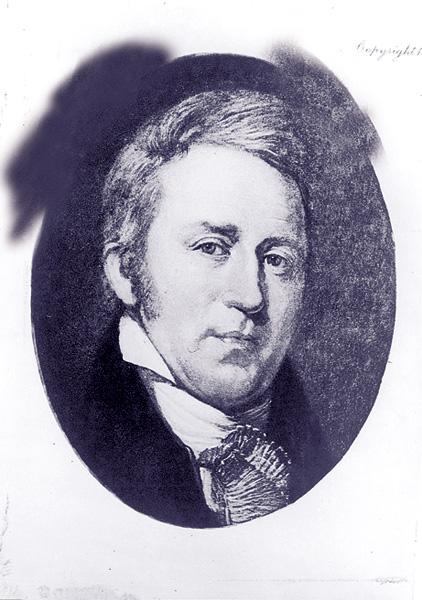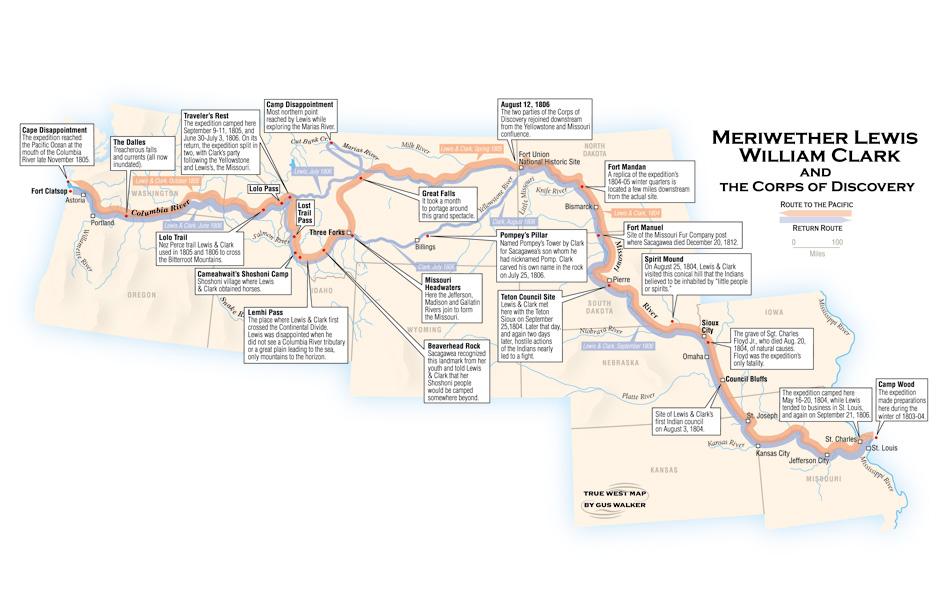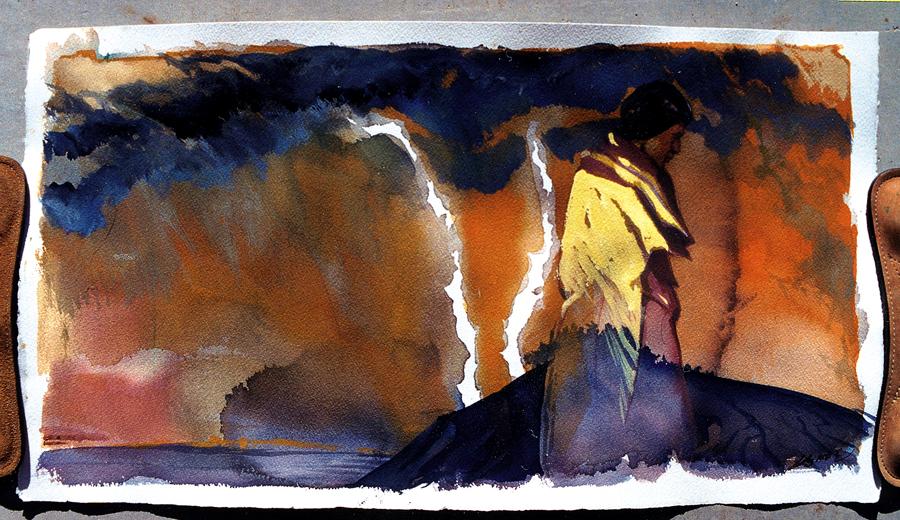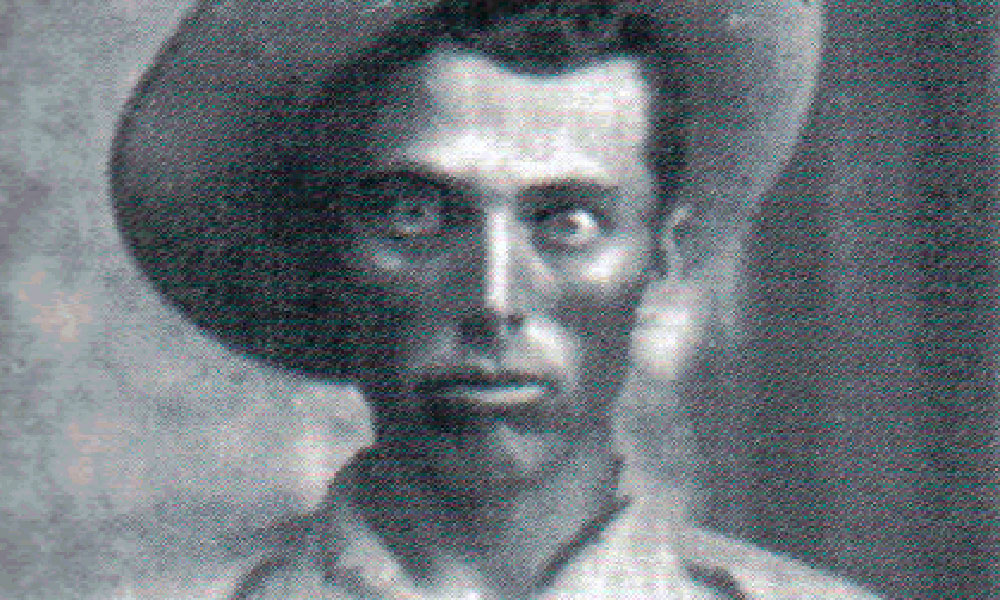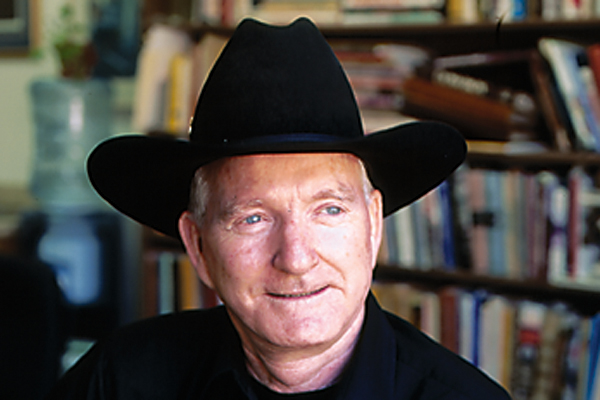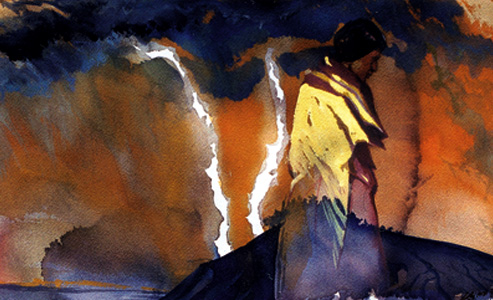 “Your woman who accompanied you that long dangerous and fatigueing rout to the Pacific Ocean and back, deserved a greater reward for her attention and Services on that rout than we had in our power to give her at the Mandans,” William Clark wrote to Sacagawea’s husband, Toussaint Charbonneau, three days after the crew dropped them off at the Mandan village.
“Your woman who accompanied you that long dangerous and fatigueing rout to the Pacific Ocean and back, deserved a greater reward for her attention and Services on that rout than we had in our power to give her at the Mandans,” William Clark wrote to Sacagawea’s husband, Toussaint Charbonneau, three days after the crew dropped them off at the Mandan village.
Such sincere respect and admiration of Sacagawea has survived more than two centuries. Sculptures and memorials placed across the West honor her to this day. Yet even something as simple as her proper name can still be cause for debate.
By birth a member of an Idaho band known today as the Lemhi Shoshoni, the interpreter for the Corps of Discovery was named Sacagawea by the Hidatsa, who had captured her “five years since,” according to Lewis’s July 28, 1805, entry. “Sacaga” means bird, and “wea” means woman.
Captains Clark and Meriwether Lewis never spelled her name Sacajawea. Nicholas Biddle, the editor of the 1814 narrative of the journals, did. So we have Biddle to thank for two centuries worth of the faulty Sacajawea spelling.
Another variant, Sakakawea, has no tie to the journals but is based on the 1877 dictionary, Ethnography and Philology of the Hidatsa Indians, which defines “tsa-ka-ka” as bird and “mia [wia, bia]” as woman. Yet such usage ignores what the compiler of the dictionary himself wrote: “In my dictionary I gave the Hidatsa word for bird as ‘Tsakaka.’ Ts is often changed to S, and K to a, in this and other Indian languages, so ‘Sacaga’ would not be a bad spelling….”
Even if you did know that Sacagawea was the proper spelling, some still are not aware of the interpreter’s nickname, Janey. She was referred to as Janey when Clark recorded her vote for a winter camp at Fort Clatsop on November 24, 1805. He also called her that in an August 20, 1806, letter he wrote to her husband, Charbonneau: “bring down your son famm Janey had best come along with you to take care of the boy until I get him….”
Now when you visit a statue or memorial honoring her memory, at least you’ll know her proper name (and nickname).
Sacagawea’s Journey
Nov. 11, 1804:
Sacagawea enters Fort Mandan with her husband. She’s six months pregnant with her first child.
Feb. 11, 1805:
With the help of Meriwether Lewis, who feeds her a physic made of rattlesnake rattle, she gives birth to a son and names him Jean Baptiste. (Clark calls him “Pomp.”)
April 13, 1805:
She calmly rescues scientific instruments and valuables being washed overboard when a pirogue almost capsizes.
May 20, 1805:
Lewis and Clark name “Bird Woman River” in her honor.
June 10, 1805:
She hovers near death alongside the Great Falls of the Missouri. She is bled repeatedly by Clark and finally recovers by drinking mineral water from a sulfur spring.
June 29, 1805:
She, Charbonneau, Pomp and Clark nearly drown in a flash flood.
July 28, 1805:
At the Three Forks of the Missouri, she calmly recounts the story of her capture by Hidatsa raiders five years earlier.
Aug. 27, 1805:
She is reunited with her brother, Cameahwait, chief of the Shoshoni band in Idaho.
Oct. 13, 1805:
Her presence convinces local tribes the expedition comes in peace.
Nov. 24, 1805:
She is allowed to vote with the men on the location of Fort Clatsop on the Oregon coast.
Jan. 6, 1806:
Sacagawea insists on being taken to the Pacific Ocean to see a beached whale.
July 6, 1806:
She points out Bozeman Pass to Clark’s party on their return trip through Montana.
Aug. 17, 1806:
She and Charbonneau remain at the lower Hidatsa village as the expedition makes its way to St. Louis and the end of its journey.
Photo Gallery
– Illustrated by Bob Boze Bell –


